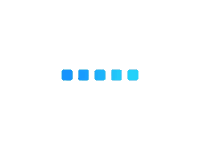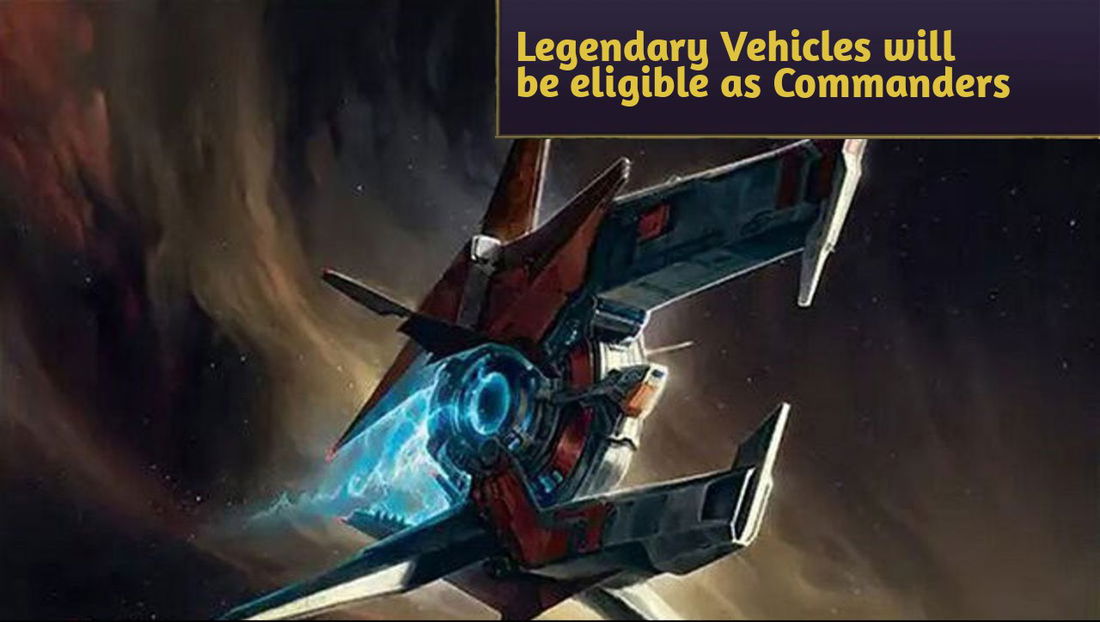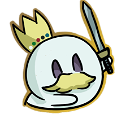Final Fantasy, the most anticipated set for Magic: The Gathering in 2025, has arrived.
In addition to the complete set of 310 new cards available in booster packs, the partnership between the two universes includes a diverse range of products, ranging from Gift Bundles and Commander Decks to the Starter Kit — a product aimed at beginners in Magic, with two decks using simpler cards and easy-to-learn mechanics, but also with some exclusive cards that only exist in this product.
Unlike the Assassin’s Creed Starter Kit, this Final Fantasy product is Standard-legal and comes with a code to own both lists on Magic Arena, the game’s digital platform — which leads to the question: is it worth improving the deck? And what routes can we follow?
This article aims to answer these questions. Keep in mind that these decks are aimed at a beginner audience — many of whom got into Magic through Final Fantasy — and consequently, these are more casual players. Therefore, our upgrades do not consider the competitive Standard metagame, but rather the player's enjoyment of the product and how to improve it while keeping it aesthetically cohesive with the product's purpose.
Deckbuilding Rules
The goal of these upgrades is not to make these lists as competitive as possible, but to make them more consistent while deepening players' immersion in the Final Fantasy universe as they discover new cards. Therefore, we have the following rules:
- The first will be entirely flavor-based in what I have dubbed Dissidia Mode, where only one of each legendary and/or Summons is included to increase the number of iconic characters that we can have in both decks, creating a “Heroes vs. Villains” theme between them.
- The second will maintain the flavor of using only Final Fantasy cards, but using traditional Magic deckbuilding techniques. In other words, bad cards will be replaced by more copies of good cards — in this case, we will respect the theme proposed by the decks in their initial lists.
- The third will be universe immersion: cards from other Magic sets will be included to add more consistency and power to the lists. These are the versions that we recommend for those who want to play “more serious” Magic in ranked games and/or local tournaments.
Cloud Strife
The Cloud, Planet’s Champion deck is essentially a 
What Leaves
Before we discuss the lists, we need to understand what’s out of the original deck and why it’s out. Remember that other cards may leave the list to maintain another theme, but the ones named below are the first cards you should consider removing, regardless of the change you make.

Dwarven Castle Guard makes sense if we consider that our opponent has cards that destroy creatures, but it does absolutely nothing around the theme of the deck, and with the equip costs being so high in this set, it is difficult to extract value from the token they put into play.
The same problem applies to Coeurl: as removal, there are more effective cards and, as a creature, it does not interact with our strategy.

Despite having interactions with equipped creatures, Item Shopkeep does nothing on its own, and most of the equipment we will prioritize already guarantees some kind of evasion.

Both Cloudbound Moogle and G’raha Tia do very little for their mana cost, and with 25 lands, it’s hard to imagine situations where we actually need Plainscycling to guarantee the land of the turn.

We want to prioritize the most efficient equipment in the set: those that have some relevant ability, or that grant, in addition to Job Select, some kind of evasion. White Mage’s Staff and Warrior’s Sword do not fit this pattern.
Ultima Weapon is a weird case: I understand the flavor of wanting to keep it on the list because it's an iconic sword from the series, but because it costs 


Slash of Light is thematically cohesive with the deck, but there are more efficient options that don't depend on the number of creatures and equipment in play.
Fate of the Sun-Cryst and The Crystal's Chosen are too expensive for their effects and can be replaced by cheaper cards.
With that out of the way, we can talk about the upgrades.
Dissidia Mode: Naya Legends
In Dissidia Mode, we decided to slightly add a third color to create a deck that is more thematically consistent. We could have gone with 


The addition of the third color also grants Torgal, a Fine Hound to add mana and buff the humans — most of the creatures in the deck are Humans — and Rinoa Heartilly, which interacts with the number of creatures in the list, in addition to Tifa Lockhart, which benefits from the increased power of some equipment and the number of lands in the list.

To accommodate so many legends, we removed the Equipment theme almost entirely, leaving only a few spot copies, such as Samurai’s Katana, which provides Trample and Haste in longer games. Since we have Cloud, Midgar Mercenary, we also added some Equipment like Lion Heart and Buster Sword.

The Wind Crystal is a good finisher if we activate its ability, and along with Rosa, Resolute White Mage, it is our main source of +1/+1 counters for Aerith Gainsborough, which buffs the entire team if she dies.

Speaking of life gain, Battle Menu is included as four copies because it works at any point in the game. We complemented it with two copies of Suplex, Thunder Magic and White Auracite to interact with the opponent.

As for creatures, we added legends that do something relevant when they come into play, or those that generate a lot of value the more turns they stay on the board. We did away with some legends that interacted with Summons as they would further disperse the focus of the list.

If you want to keep the deck more themed around Final Fantasy VII, you can swap Seifer Almasy for Barret Wallace, but we lose a lot of his potential with less equipment, and Seifer is particularly lethal with Tifa Lockhart or Lightning, Army of One.
Despite the high costs, our list is well distributed between two and three mana, allowing us to reduce the number of lands to 24, since we have four sources that generate mana among our permanents. In addition, we added some lands that add 
Adding green also made it possible to include Zanarkand, Ancient Metropolis, a better option than the other Adventure Lands in the set for this strategy, and that also works as a reference to both Tidus and Yuna from Final Fantasy X

Final Fantasy Mode: Boros Equipments
This version keeps the focus on the Equipment theme and includes both cards that are individually powerful in the Boros colors and also the shell that interacts with this theme. Among them, Cloud, Midgar Mercenary and Raubahn, Bull of Ala Mhigo stand out, where one allows you to search for equipment in the deck while the other attaches it for free.

We've maxed out the amount of equipment that grants evasion, and added Machinist's Arsenal as a significant power boost, as well as Buster Sword as a flexible target to search with Cloud.

In the creature package, Lightning, Army of One and Seifer Almasy gain more synergies when we have Raubahn to attach equipment for free, and we've increased the number of spells with Opera Love Song in addition to Battle Menu, which increases the power of creatures with Trample, or gives more gas over the course of the game.
We also have Summon: Brynhildr as a creature that offers a draw while in play, and Haste for other creatures works perfectly with Raubahn, Lightning and Seifer.

Ishgard, the Holy See makes more sense when we expand the equipment pool, and Lindblum, Industrial Regency puts another body on the board for us to attach equipment to, in addition to offering more reach with non-creature spells.

Magic Mode: Boros Equipments
By adding cards from other Magic expansions, we have enough improvements in mana costs and lands to reduce the number of them to 23, maybe even 22 if we want to cut some cards that cost three or more.
Duskmourn offers Chainsaw as removal that we can chase with Cloud, Midgar Mercenary, while the Phyrexia set grants cards with the “For Mirrodin!” mechanic, which is technically better than Job Select.
Celestial Armor grants evasion but also works to protect your creatures from removal, while Lost Jitte interacts with Cloud to grant two counters per combat, which can be used to move blockers out of the way or untap lands for more mana.

We also have Basilisk Collar for Lifelink and Cori-Steel Cutter, which, added to the amount of cheap spells and Opera Love Song, has no difficulty in creating new tokens every turn.
It is worth mentioning the possibility of Cori-Steel Cutter being banned at the end of June. In this case, I would recommend swapping it for Sheltered by Ghosts, which despite not being searched with Cloud or equipped with Raubahn, offers removal, Lifelink and protection in a single card.

Also consider that Bladehold War Whip and Battlefield Forge will rotate out of Standard on August 1st, with the release of Edge of Eternities. Forge can be replaced by another dual 
Sephiroth
Sephiroth, Planet’s Heir’s deck is your classic 
Since the Starter Kit is a more proactive product, several creatures were inserted and most of them do very little in terms of synergies, so there is plenty of room to replace things.
What Leaves

You can keep these cards if you prefer a more Midrange take, but Sephiroth wants to go for the long game and these two do very little on their own, making them poor topdecks.

Three-mana creatures work with the base Starter Kits, but they are pretty bad when we start thinking about upgrades to the lists, simply because there are better cards at other rarities.

The same is true for some spells: they are fun, they work in the closed product in a 1v1 game, but when we think about upgrades, they become obsolete cards.
Dissidia Mode: Grixis Villains
As we did with Cloud's deck, the villain list gains a third color with 

Along with him, we added the (almost) complete Final Fantasy villain package, whose red splash guaranteed Garland, Knight of Cornelia and Kuja, Genome Sorcerer. I have some problems with adding Golbez, Crystal Collector to this list with almost no interaction with artifacts, but it seemed strange to leave him out with so many iconic villains in the same deck.

These villains also expand our mana curve, so we add Summon: Primal Odin as a potential one-hit-kill in a list with so many board interactions, and close the top of the curve with Ardyn, the Usurper, which interacts with Resentful Revelation and Memories Returning — Emet-Selch, Unsundered also fits into the cards that interact with the Surveil/Mill, allowing us to reuse all cards from the graveyard if transformed.

For Final Fantasy XII, Vayne’s Treachery joins Overkill as our main source of interaction, and is complemented by Zenos yae Galvus and Sephiroth, Planet’s Heir — and with so many removals and black spells on the list, The Darkness Crystal seems like a great choice.

As with the lists above, Starting Town and a few red duals are included to make mana more consistent, as well as Midgar, City of Mako, which provides a few more cards in longer games.

Final Fantasy Mode: Grixis Villains
There isn't much difference between the versions of this and the list above, we just removed the worst cards to increase the number of more powerful options, and increased the copies of Memories Returning to have more card advantage, and more Blitzball, which turns into an extra draw with almost any creature that deals damage to the opponent in this list.

Our plan is to become a Midrange that sculpts its hand and controls the game in the early turns with removal, followed by one threat after another that buries the opponent in some form of card advantage: Emet-Selch, Unsundered and Kefka, Court Mage are especially versatile in this regard and pave the way for us to get the most out of Ardyn, the Usurper.

Unfortunately, there are no black sweepers in Final Fantasy, which is perhaps the biggest problem with this one, since we only have Zenos yae Galvus and Sephiroth, Planet’s Heir as board wipes. Fortunately, both can sequence or be sequenced with Summon: Primal Odin.

Magic Mode: Grixis Reanimator
Trying to follow the Midrange line with other cards means losing a lot of Final Fantasy pieces, so our proposal aims to get the most out of Kefka, Court Mage and Emet-Selch, Unsundered in a Reanimator deck, where the main targets are Ardyn, the Usurper and the Sagas Summon: Knights of Round and Summon: Bahamut.

We also included Trumpeting Carnosaur, a classic Reanimator target in Standard that can bring any of our threats to the board. Our ideal play, in fact, involves reanimating Ardyn so that he can reanimate Canosaur, and thus put three permanents into play with a single card, but we can use it as removal in the early game.
To enable the combo, we have Fear of Missing Out and Overlord of the Balemurk, two creatures whose types also interact well with Kefka, Court Mage, allowing us to draw more cards per trigger.
Speaking of discard sources, Emet-Selch, Unsundered might seem a bit odd in a Reanimator list, but its transformation is a may, which means we don't have to transform it unless we want to. In this way, putting the cards into the graveyard and having Selch in play is the equivalent of doing a "Setup" for the combo, since we can reuse the Zombify from there to reanimate the creatures.

The interaction includes most of the classic Standard staples that will remain in the format with Edge of Eternities. Unfortunately, Cut Down and Go for the Throat aren't among them, but we do have Torch the Tower and, in the 

The mana base assumes that all allied Fast Lands and Pain Lands will rotate in August, so we've included the Surveil Lands mix with the Verges to compensate, as well as Starting Town as a multicolored land.

Wrapping Up
That's all for today!
If you have any questions, feel free to leave a comment!
Thanks for reading!














— Comments 0
, Reactions 1
Be the first to comment